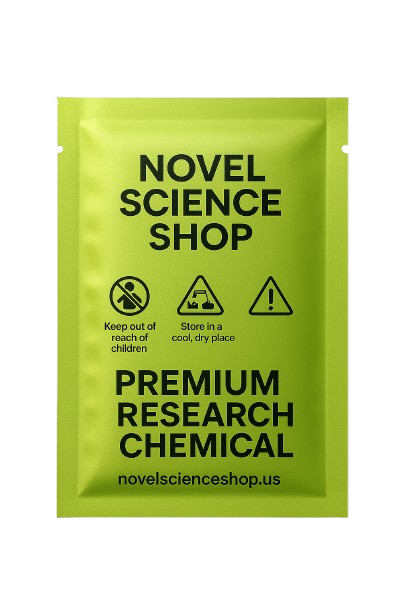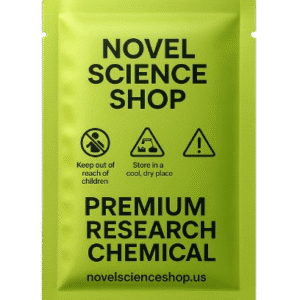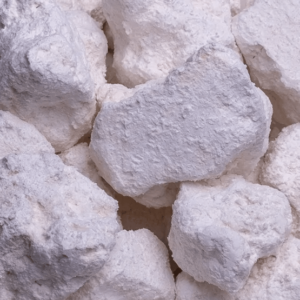Description
3-CMC Crystal Chunks — High-Purity Research Chemical
3-CMC, or 3-Chloromethcathinone, is a synthetic cathinone derivative often used as a reference standard in advanced laboratory research. In its pure crystalline or chunk form, this compound provides a stable, high-purity basis for analytical, pharmacological, and forensic studies under strictly controlled, non-clinical conditions.
Background, Discovery & Scientific Relevance
The chemical name for 3-CMC is 1-(3-chlorophenyl)-2-(methylamino)-1-propanone. In its free base form, the CAS registry number is 1049677-59-9, while the hydrochloride salt form is known as CAS 1607439-32-6.
3-CMC emerged in the early 2010s as a designer cathinone, first documented in the Swedish drug market circa 2014. Its core structure is closely related to methcathinone analogs, differentiated by a chlorine atom at the meta (3-) position on the aromatic ring. Because of its structural similarity to bioactive cathinones, 3-CMC is of interest in transporter studies (dopamine, serotonin, norepinephrine) and in exploring structure–activity relationships in psychostimulant pharmacology.
Though 3-CMC is primarily a research chemical with limited published in vivo data, it is widely used by toxicology and analytical chemistry laboratories as an internal or external standard. In forensic and academic settings, it supports method validation, chiral separation studies, and metabolite identification.
Applications in Laboratory Research & Analytical Study
In controlled, licensed research environments, 3-CMC crystal chunks can be used to prepare stock solutions for GC-MS, LC–MS, chiral separations, isomer differentiation, and metabolite profiling. Its role as a reference standard is especially important when distinguishing 3-CMC from its isomeric analogs 2-CMC or 4-CMC, which present close retention times and overlapping mass spectral patterns.
Researchers can dissolve weighed crystals in DMSO, methanol, or suitable buffer systems and then dilute further for calibration curves, stability tests in biological matrices, or forced degradation studies. Some studies have used acidification and low-temperature storage of biological samples to maintain 3-CMC integrity and limit degradation.
In pharmacological screening, 3-CMC may also serve as a ligand or comparator in transporter assays (e.g. dopamine reuptake inhibition vs releasing activity), although its bioactivity is less well characterized than better-studied analogs.
Effects & Benefits (in Research Context)
From an analytical standpoint, the chief “benefit” of 3-CMC is reproducible, high-purity behavior in calibration, method development, and forensic quantitation. Its structural similarity to active cathinones makes it particularly valuable in development of screening or confirmation panels for new psychoactive substances (NPS). The crystalline form ensures easier weighing and handling of discrete solid masses rather than fine powders, reducing static issues and cross-contamination.
Stability, Safety & Responsible Handling
3-CMC is moderately stable under low-temperature, inert conditions; however, it is known to degrade under ambient moisture or elevated temperature, particularly in free base form. Studies show that acidification and freezing of biological matrices can protect 3-CMC from decomposition to dehydro metabolites.
Safety precautions are critical:
-
Always treat 3-CMC as a hazardous chemical. Use in a certified fume hood with proper personal protective equipment (PPE): gloves (nitrile or equivalent), lab coat, safety goggles, and, if dust risk exists, respiratory protection.
-
Avoid inhalation, ingestion, or skin contact.
-
Use precise weighing tools in a contained balance enclosure.
-
Work with minimal quantities and maintain rigorous cleanliness and decontamination protocols in your lab space.
Note: This material is not for human consumption under any circumstances. It is strictly for licensed laboratory, forensic, and analytical research.
Recommended Storage & Shelf Life
For optimal longevity, store 3-CMC crystal chunks in an airtight, desiccated, amber or opaque container under –20 °C or colder (–80 °C preferred). Avoid repeated freeze-thaw cycles and exposure to ambient humidity or heat. According to some supplier references, when stored at –20 °C, usage is recommended within about 1 month; at –80 °C, usage within 6 months is more stable.
Under ideal inert, anhydrous, cold storage, properly sealed crystalline standards may retain > 98 % purity for 6-12 months, but actual shelf life depends on batch purity, packaging, and environmental control. Always confirm via periodic revalidation (e.g. purity check by HPLC/GC).
Usage Domains & Research Areas
The primary usage areas for 3-CMC crystal chunks include:
-
Analytical chemistry / forensic toxicology — standard reference or internal standard in seized drug analysis, metabolite profiling, and method validation.
-
Neuroscience & psychopharmacology — as a comparative ligand in transporter, uptake, or release assays, or in structure–activity investigations.
-
Academic chemistry & cheminformatics — computational modeling, stability kinetics, degradation pathway studies.
-
Drug metabolism & pharmacokinetics — when studying synthetic cathinone analogs, mapping metabolic routes (e.g. N-desmethyl, dihydro derivatives).
Licensed laboratories, universities, and government forensic institutions working under regulation may find 3-CMC a key reference standard in evolving NPS panels.
For guaranteed quality, researchers should verify Certificate of Analysis (CoA), purity (≥ 98 %), enantiomeric composition (if relevant), and batch-specific stability data.
To ensure your lab always has access to verified quality materials, you may place your orders via a trusted provider. For example, you can begin with our homepage here: Novel Science Shop — we deliver research-grade chemicals under strict regulatory compliance.






